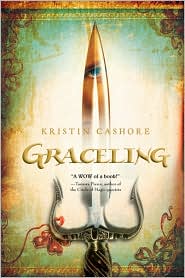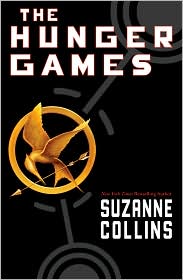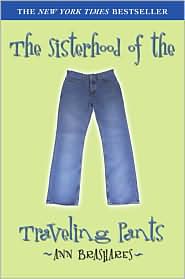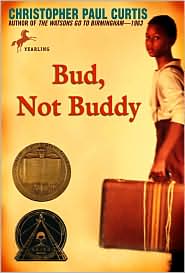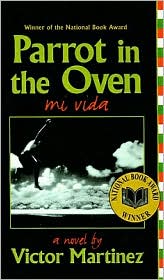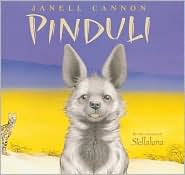Title: Graceling
Author: Kristin Cashore
Bibliography: Cashore, Kristin. Graceling. Orlando, FL: Harcourt, 2008. Print.
Summary: Katsa is an assassin hired by her uncle, the king and is forced to torture or kill anyone who commits faults against the king. Katsa is special, she is Graced with the ability to kill like no other. However, when Po sneaks into the kingdom in search of his father, instead of killing him, Katsa begins to doubt her king. Together, Katsa and Po form the Council and help others in the fight against the tyrannical king.
Reviews: School Library Journal (October 1, 2008)
Gr 8 Up-In this debut fantasy novel, Cashore treats readers to compelling and eminently likable characters and a story that draws them in from the first paragraph. In Katsa's world, the "Graced," those gifted in a particular way, are marked by eyes that are different colors. Katsa's Grace is that she is a gifted fighter, and, as such, she is virtually invincible. She is in the service of her tyrannical uncle, king of one of the seven kingdoms, and she is forced to torture people for infractions against him. She has secretly formed the Council, which acts in the service of justice and fairness for those who have been accused and abused. Readers meet her as she is rescuing the father of the Lienid king, who has been abducted. The reasons for his capture are part of a tightening plot that Katsa unravels and resolves, with the help of Prince Po, the captive's grandson. He has his own particular Grace, and he becomes Katsa's lover and partner in what becomes a mortally dangerous mission. Cashore's style is exemplary: while each detail helps to paint a picture, the description is always in the service of the story, always helping readers to a greater understanding of what is happening and why. This is gorgeous storytelling: exciting, stirring, and accessible. Fantasy and romance readers will be thrilled.-Sue Giffard, Ethical Culture Fieldston School, New York City Copyright 2008 Reed Business Information.
Impressions: I really enjoyed this book and look forward to reading the next in the series, Fire. I love fantasy stories and liked reading about Katsa. I felt that her story could easily be translated into being an outcast, who is different and how she handles it. She keeps people at a distance, but in the end, gets the boy. I felt that they could have left out the sex scenes with Po, it wasn't appropriate for this age group and I don't think the story line would have lost anything if they left it out.
Activities: Students will write a creative paper on having a grace like Katsa in the story. Students will have to explain in detail what the grace is, how it benefits their life as well as how it hinders their life.
Title: The Hunger Games
Author: Suzanne Collins
Bibliography: Collins, Suzanne. The Hunger Games. New York: Scholastic, 2008. Print.
Summary: In a post-apocalyptic society made up of twelve districts, Katniss Everdeen lives in District Twelve, the farthest from the Capitol. Every year, two children from each district are chosen to participate in the Hunger Games, a televised fight-to-the-death competition, where the survivor wins food and prizes for his/her entire district. The year that Katniss's younger sister, Prim, is chosen, Katniss decides to take her place and with the help of Peeta, District Twelve's other competitor, must fight to survive the cruel Hunger Games.
Reviews: School Library Journal (September 1, 2008)
Gr 7 Up-In a not-too-distant future, the United States of America has collapsed, weakened by drought, fire, famine, and war, to be replaced by Panem, a country divided into the Capitol and 12 districts. Each year, two young representatives from each district are selected by lottery to participate in The Hunger Games. Part entertainment, part brutal intimidation of the subjugated districts, the televised games are broadcasted throughout Panem as the 14 participants are forced to eliminate their competitors, literally, with all citizens required to watch. When 16-year-old Katniss's young sister, Prim, is selected as the mining district's female representative, Katniss volunteers to take her place. She and her male counterpart, Peeta, the son of the town baker who seems to have all the fighting skills of a lump of bread dough, will be pitted against bigger, stronger representatives who have trained for this their whole lives. Collins's characters are completely realistic and sympathetic as they form alliances and friendships in the face of overwhelming odds; the plot is tense, dramatic, and engrossing. This book will definitely resonate with the generation raised on reality shows like "Survivor" and "American Gladiator." Book one of a planned trilogy.-Jane Henriksen Baird, Anchorage Public Library, AK Copyright 2008 Reed Business Information.
Impressions: This series has been very popular in my school for about the past year and I finally had enough time to sit down and read it. I read all three books in the series in about a week. I loved the story, it was very different from the rest of the fantasy stories out there. While a lot of novels today are about dystopian societies, this one took it to a new level with the Hunger Games and how an entire district has to rely on one child. By the end of the first book, you are so involved in the story and what happens next that you just have to pick up Catching Fire. I talked my mother into reading the series and we had many a heated argument over whether Katsa should be with Peeta or Gale. I, of course, disagreed with the ending of the trilogy and really wanted her to end up with the other guy.
Activities: This would be a great book to include in a display with other futuristic stories and to introduce the idea of dystopian societies. As students read books such as The Giver in the seventh grade, you could introduce this book as well as others, such as Roar by Emma Clayton, Gathering Blue and The Messenger by Lois Lowry, The Maze Runner by James Dashner, etc.
"I loved middle school so much that I decided to stay there forever!" said no person EVER! However, here I am, twenty years later, spending my days in a middle school library; and honestly enjoying every minute of it! Between reading YA Lit, binge watching Doctor Who, and playing Guitar Hero Live; I am also a wife, mother, and full time middle school librarian. "I love to read. And the only thing, perhaps, that I love more than reading is telling other people what they should read."
Wednesday, June 22, 2011
Module 4: Realistic Fiction
Title: Frindle
Author: Andrew Clements
Bibliography: Clements, Andrew, and Brian Selznick. Frindle. New York, NY: Simon & Schuster for Young Readers, 1996. Print.
Summary: Nick Allen is a fourth grade expert at getting out of homework. But with the new school year, comes a new teacher, Mrs. Granger. Mrs. Granger's reputation precedes her with her obsession for the dictionary. Nick takes this into consideration when he tries to test her by creating a new word, frindle. Soon, the entire fifth grade is asking to borrow a frindle from a classmate or getting their parents to add frindles to the grocery list. The news of the new word soon exceeds past the fifth grade to the local newspaper, then goes as far as Nick appearing on the Late Show with David Letterman. Ten years down the line, when Nick is in college, he receives a gift from Mrs. Granger of a brand new dictionary with the word frindle on page 541.
Reviews: School Library Journal (September 1996)
Gr 4-6--Nicholas Allen, a sharp, creative, independent thinker starts fifth grade looking for a way to sabotage his Language Arts class. The teacher, Mrs. Granger, is a legend, and he believes her when she states that it is the people who decide what words go into the dictionary. Picking up a dropped pen triggers a brilliant idea. He coins a new word for pen-frindle. It's all for fun, but frindle catches on and Nick finds himself on the "Late Show" and "Good Morning America" explaining his new word. Readers will chuckle from beginning to end as they recognize themselves and their classrooms in the cast of characters. A remarkable teacher's belief in the power of words shines through the entire story, as does a young man's tenacity in proving his point. Outstanding and witty.--Pamela K. Bomboy, Chesterfield County Public Schools, VA
Impressions: Even though this book is for elementary school, I really enjoyed reading it. I love how it started out with the "bad" boy pranking the teacher and in the end the teacher was in on it the entire time. As a teacher, I absolutely loved the ending of the book. I just wish that my students would get the same out of the story as I did.
Activities: You could use this book as a class study involving the dictionary and how words are created. You could have each of the students create their own word, giving a detailed description of where the word came from and why it should be used. Then allow the students time to see if any of their words catch on throughout the school.
Title: Sisterhood of the Traveling Pants
Author: Ann Brashear
Bibliography: Brashares, Ann. The Sisterhood of the Traveling Pants. New York: Delacorte, 2003. Print.
Summary: The book tells the story of four teenage friends: Tibby, Bridget, Carmen, and Lena, and how they spend their summer vacation. The girls keep in touch writing letters and mailing a pair of jeans back and forth that surprisingly fit all four girls. The four friends all experience typical teenage conflicts: family issues, boyfriend problems, personal troubles, etc. By the end of the summer, each girl has resolved her problem (with the help of the pants) and matured a little through it all.
Reviews: School Library Journal (August 1, 2001)
Gr 9 Up-Best friends Lena, Tibby, Bridget, and Carmen are preparing to spend their first summer apart since they were born. Before leaving to visit her father, Carmen buys a pair of second-hand jeans on a whim, and when the others discover that the pants fit all of them, they create the sisterhood of the traveling pants. Each teen gets them for a few weeks before sending them on, and thus they travel from Washington, DC, to Greece to Baja California to South Carolina, linking the friends even as they are apart. The summer and the pants come to represent more than any of them can ever anticipate in this four-part coming-of-age story. Before the season ends, each teen must deal with some unpleasant problem, reach a real low, then confront her personal flaws and pull herself back up again. Brashares deftly moves from narrative to narrative, weaving together themes from the mundane to the profoundly important, from death to raging hormones, from stepfamilies to dead-end minimum-wage jobs. The endings aren't pat, yet each story line comes to a satisfying conclusion. All four girls are completely realistic, and even the secondary and adult characters are fully drawn. The result is a complex book about a solid group of friends, with each one a strong and courageous individual in her own right. They form a true sisterhood of acceptance and support, resulting in a believable and inviting world.-Linda Bindner, Truman State University, Kirksville, MO Copyright 2001 Cahners Business Information.
Impressions: I enjoyed reading this book, you really begin to bond with each of the characters and can easily identify with at least one of them. I felt that I was easily a Tibby. Even though the review from the School Library Journal ranked this as grades nine and up, I could easily see a middle school student reading it. I feel that the material is not too mature for someone in seventh or eighth grade to be able to relate to.
Activities: This could be a good beginning of the school book where you can encourage students to write about their summer, either through letters, journals, or just a narrative story.
Author: Andrew Clements
Bibliography: Clements, Andrew, and Brian Selznick. Frindle. New York, NY: Simon & Schuster for Young Readers, 1996. Print.
Summary: Nick Allen is a fourth grade expert at getting out of homework. But with the new school year, comes a new teacher, Mrs. Granger. Mrs. Granger's reputation precedes her with her obsession for the dictionary. Nick takes this into consideration when he tries to test her by creating a new word, frindle. Soon, the entire fifth grade is asking to borrow a frindle from a classmate or getting their parents to add frindles to the grocery list. The news of the new word soon exceeds past the fifth grade to the local newspaper, then goes as far as Nick appearing on the Late Show with David Letterman. Ten years down the line, when Nick is in college, he receives a gift from Mrs. Granger of a brand new dictionary with the word frindle on page 541.
Reviews: School Library Journal (September 1996)
Gr 4-6--Nicholas Allen, a sharp, creative, independent thinker starts fifth grade looking for a way to sabotage his Language Arts class. The teacher, Mrs. Granger, is a legend, and he believes her when she states that it is the people who decide what words go into the dictionary. Picking up a dropped pen triggers a brilliant idea. He coins a new word for pen-frindle. It's all for fun, but frindle catches on and Nick finds himself on the "Late Show" and "Good Morning America" explaining his new word. Readers will chuckle from beginning to end as they recognize themselves and their classrooms in the cast of characters. A remarkable teacher's belief in the power of words shines through the entire story, as does a young man's tenacity in proving his point. Outstanding and witty.--Pamela K. Bomboy, Chesterfield County Public Schools, VA
Impressions: Even though this book is for elementary school, I really enjoyed reading it. I love how it started out with the "bad" boy pranking the teacher and in the end the teacher was in on it the entire time. As a teacher, I absolutely loved the ending of the book. I just wish that my students would get the same out of the story as I did.
Activities: You could use this book as a class study involving the dictionary and how words are created. You could have each of the students create their own word, giving a detailed description of where the word came from and why it should be used. Then allow the students time to see if any of their words catch on throughout the school.
Title: Sisterhood of the Traveling Pants
Author: Ann Brashear
Bibliography: Brashares, Ann. The Sisterhood of the Traveling Pants. New York: Delacorte, 2003. Print.
Summary: The book tells the story of four teenage friends: Tibby, Bridget, Carmen, and Lena, and how they spend their summer vacation. The girls keep in touch writing letters and mailing a pair of jeans back and forth that surprisingly fit all four girls. The four friends all experience typical teenage conflicts: family issues, boyfriend problems, personal troubles, etc. By the end of the summer, each girl has resolved her problem (with the help of the pants) and matured a little through it all.
Reviews: School Library Journal (August 1, 2001)
Gr 9 Up-Best friends Lena, Tibby, Bridget, and Carmen are preparing to spend their first summer apart since they were born. Before leaving to visit her father, Carmen buys a pair of second-hand jeans on a whim, and when the others discover that the pants fit all of them, they create the sisterhood of the traveling pants. Each teen gets them for a few weeks before sending them on, and thus they travel from Washington, DC, to Greece to Baja California to South Carolina, linking the friends even as they are apart. The summer and the pants come to represent more than any of them can ever anticipate in this four-part coming-of-age story. Before the season ends, each teen must deal with some unpleasant problem, reach a real low, then confront her personal flaws and pull herself back up again. Brashares deftly moves from narrative to narrative, weaving together themes from the mundane to the profoundly important, from death to raging hormones, from stepfamilies to dead-end minimum-wage jobs. The endings aren't pat, yet each story line comes to a satisfying conclusion. All four girls are completely realistic, and even the secondary and adult characters are fully drawn. The result is a complex book about a solid group of friends, with each one a strong and courageous individual in her own right. They form a true sisterhood of acceptance and support, resulting in a believable and inviting world.-Linda Bindner, Truman State University, Kirksville, MO Copyright 2001 Cahners Business Information.
Impressions: I enjoyed reading this book, you really begin to bond with each of the characters and can easily identify with at least one of them. I felt that I was easily a Tibby. Even though the review from the School Library Journal ranked this as grades nine and up, I could easily see a middle school student reading it. I feel that the material is not too mature for someone in seventh or eighth grade to be able to relate to.
Activities: This could be a good beginning of the school book where you can encourage students to write about their summer, either through letters, journals, or just a narrative story.
Monday, June 20, 2011
Module 3: Newbery/Printz/Coretta Scott King/Pura Belpre Winners
Book Title: Bud, Not Buddy
Author: Christopher Paul Curtis
Bibliography: Curtis, Christopher Paul. Bud, Not Buddy. New York: Delacorte, 1999. Print.
Summary: Bud lives during the Great Depression in Flint, Michigan. He runs away from a foster home and sets out to find the man he thinks is his father, a famous bandleader, H.E. Calloway.
Reviews: School Library Journal (September 1999)
Gr 4-7-When 10-year-old Bud Caldwell runs away from his new foster home, he realizes he has nowhere to go but to search for the father he has never known: a legendary jazz musician advertised on some old posters his deceased mother had kept. A friendly stranger picks him up on the road in the middle of the night and deposits him in Grand Rapids, MI, with Herman E. Calloway and his jazz band, but the man Bud was convinced was his father turns out to be old, cold, and cantankerous. Luckily, the band members are more welcoming; they take him in, put him to work, and begin to teach him to play an instrument. In a Victorian ending, Bud uses the rocks he has treasured from his childhood to prove his surprising relationship with Mr. Calloway. The lively humor contrasts with the grim details of the Depression-era setting and the particular difficulties faced by African Americans at that time. Bud is a plucky, engaging protagonist. Other characters are exaggerations: the good ones (the librarian and Pullman car porter who help him on his journey and the band members who embrace him) are totally open and supportive, while the villainous foster family finds particularly imaginative ways to torture their charge. However, readers will be so caught up in the adventure that they won't mind. Curtis has given a fresh, new look to a traditional orphan-finds-a-home story that would be a crackerjack read-aloud.-Kathleen Isaacs, Edmund Burke School, Washington, DC
Copyright 1999 Cahners Business Information.
Book Title: Parrot in the Oven: Mi Vida
Author: Victor Martinez
Bibliography: Martinez, Victor. Parrot in the Oven: Mi Vida. New York: HarperCollins, 1996. Print.
Summary: Manny is a young Mexican-American boy who tells the story of his constant life struggles. Everything from joining a gang, an abusive father, working in the vegetable fields, an OCD mother, and a sister who has a miscarriage. Through it all, he survives and learns that it is the life experiences that make you the person you become.
Reviews: Booklist (Vol. 93, No. 4 (October 15, 1996))
Gr. 7-10. For Mexican American teen Manuel, the main challenge in life, whether he always realizes it or not, is to find a reason to survive amid the negativity and emptiness that pervade his growing up in a city project. His father, unemployed and often drunk, is a source of tension for the whole family, especially Manuel's mother, whose determination to keep them all together is at times superhuman. The novel, written in a fluid, poetic language, resembles a series of vignettes more than one connected story; and this structure not only leaves the character development of Manuel and his family uneven but also generates a disjointedness that is occasionally confusing. There is also a general lack of basic information, such as the exact setting of the story and the ages of Manuel and his siblings, that may make the characters and their environment difficult for readers to visualize. However, the stories themselves, from Manuel's sister's miscarriage to his initiation into a gang to his grandmother's death, are not easily forgotten, and the book is worth purchasing for its authentic portrayal of a Hispanic teen's experiences.
Impressions:While the Booklist review said that the appropriate age group for this book was grades 7-10, I would definitely not teach this book in middle school. The story line has very mature parts in it, especially the graphic scene of the miscarriage, I would not encourage this book for such a young audience. Personally, I found the story depressing, one bad thing right after another for Manuel.
Author: Christopher Paul Curtis
Bibliography: Curtis, Christopher Paul. Bud, Not Buddy. New York: Delacorte, 1999. Print.
Summary: Bud lives during the Great Depression in Flint, Michigan. He runs away from a foster home and sets out to find the man he thinks is his father, a famous bandleader, H.E. Calloway.
Reviews: School Library Journal (September 1999)
Gr 4-7-When 10-year-old Bud Caldwell runs away from his new foster home, he realizes he has nowhere to go but to search for the father he has never known: a legendary jazz musician advertised on some old posters his deceased mother had kept. A friendly stranger picks him up on the road in the middle of the night and deposits him in Grand Rapids, MI, with Herman E. Calloway and his jazz band, but the man Bud was convinced was his father turns out to be old, cold, and cantankerous. Luckily, the band members are more welcoming; they take him in, put him to work, and begin to teach him to play an instrument. In a Victorian ending, Bud uses the rocks he has treasured from his childhood to prove his surprising relationship with Mr. Calloway. The lively humor contrasts with the grim details of the Depression-era setting and the particular difficulties faced by African Americans at that time. Bud is a plucky, engaging protagonist. Other characters are exaggerations: the good ones (the librarian and Pullman car porter who help him on his journey and the band members who embrace him) are totally open and supportive, while the villainous foster family finds particularly imaginative ways to torture their charge. However, readers will be so caught up in the adventure that they won't mind. Curtis has given a fresh, new look to a traditional orphan-finds-a-home story that would be a crackerjack read-aloud.-Kathleen Isaacs, Edmund Burke School, Washington, DC
Copyright 1999 Cahners Business Information.
Book Title: Parrot in the Oven: Mi Vida
Author: Victor Martinez
Bibliography: Martinez, Victor. Parrot in the Oven: Mi Vida. New York: HarperCollins, 1996. Print.
Summary: Manny is a young Mexican-American boy who tells the story of his constant life struggles. Everything from joining a gang, an abusive father, working in the vegetable fields, an OCD mother, and a sister who has a miscarriage. Through it all, he survives and learns that it is the life experiences that make you the person you become.
Reviews: Booklist (Vol. 93, No. 4 (October 15, 1996))
Gr. 7-10. For Mexican American teen Manuel, the main challenge in life, whether he always realizes it or not, is to find a reason to survive amid the negativity and emptiness that pervade his growing up in a city project. His father, unemployed and often drunk, is a source of tension for the whole family, especially Manuel's mother, whose determination to keep them all together is at times superhuman. The novel, written in a fluid, poetic language, resembles a series of vignettes more than one connected story; and this structure not only leaves the character development of Manuel and his family uneven but also generates a disjointedness that is occasionally confusing. There is also a general lack of basic information, such as the exact setting of the story and the ages of Manuel and his siblings, that may make the characters and their environment difficult for readers to visualize. However, the stories themselves, from Manuel's sister's miscarriage to his initiation into a gang to his grandmother's death, are not easily forgotten, and the book is worth purchasing for its authentic portrayal of a Hispanic teen's experiences.
Impressions:While the Booklist review said that the appropriate age group for this book was grades 7-10, I would definitely not teach this book in middle school. The story line has very mature parts in it, especially the graphic scene of the miscarriage, I would not encourage this book for such a young audience. Personally, I found the story depressing, one bad thing right after another for Manuel.
Thursday, June 16, 2011
Module 2: Caldecott Picture Books
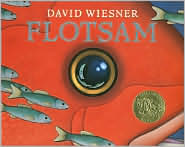 Book Title: Flotsam
Book Title: FlotsamAuthor: David Wiesner
Bibliography: Wiesner, David. Flotsam. New York: Clarion, 2006. Print.
Summary: While playing on a beach, a boy finds a strange camera that has washed ashore. Curious about the camera, he takes the film to be developed and finds strange pictures of the undersea world. He finds pictures of cities made out of seashells grown on the back of sea turtles and octopi sitting in Lazy Boys reading books while being lit from lampshade covered lighting fish. He also finds pictures of other children holding a picture of another child. After examining the pictures with a magnifying glass, as well as a microscope, he finds pictures inside of pictures from very long ago. The boy takes a picture of himself and returns the camera to the sea.
Reviews: School Library Journal (April 1, 2011)
PreS-Gr 4-The properties and attendant framing shapes of the magnifying glass, camera, and microscope focus on photographs from a camera found on the beach. The watercolor sequence moves around the world and back in time, revealing a child holding a picture of the subsequent child (and an underwater fantasy) in this Caldecott winner. (c) Copyright 2011. Library Journals LLC, a wholly owned subsidiary of Media Source, Inc. No redistribution permitted.
Impressions:I really enjoyed reading this book, even though there are technically no words to it. I loved how the pictures told the story. The illustrations were beautiful and creative and told the story easily with no questions about the plot.
Activities: The thing that I loved most about this book (besides the beautiful illustrations) was the fact that there was absolutely no text in the entire book. I could see using this book as teaching plot, and having students find the exposition, rising action, climax, falling action, and resolution to the story. I believe that since there is no text for the book that each student will get something different out of it.
Book Title: Pinduli
Author: Janell Cannon
Bibliography: Cannon, Janell. Pinduli. Orlando: Harcourt, 2004. Print.
Summary: Pinduli is a hyena that lives on the African plains. While her mother tells her she is beautiful, Dog, Zebra, and Lion tell her otherwise. The point out that her ears are too big, her mane is straggly, and her stripes are disorderly. Wanting to disappear, Pinduli rolls in the dust till her fur is white. The other animals mistake her for the Great Spirit and want to know what they can do to appease the Spirit for making fun of the young hyena. Pinduli orders the animals to make peace. Through the other animals' confessions we learn that they only teased Pinduli about her looks because they to had been teased by other animals.
Reviews: School Library Journal (October 1, 2004)
PreS-Gr 3-After sleeping through the hot East African afternoon, it is time for Mama Hyena and her child to go hunting. Pinduli promises to stay close by, but then trots off. She comes across a pack of wild dogs, a lion, and a zebra, and all tease her about her looks. She rolls in the dirt until her striped coat is a pallid gray and her ears are pinned back. The animals think that she is a "ghost" that has come for them. All of the creatures then confess that they teased the young hyena because another animal had made fun of them. The "ghost" understands and advises them to "find your tormentors and make peace-. And always leave a bit of every meal as an offering." By story's end, the animals have reconciled, and with all the food offerings left, Pinduli and her mother never have to scrounge around looking for meals. The animals' expressions and antics are hilarious and endearing; Cannon has pulled off quite a feat in creating a cuddly hyena protagonist. This touching book about personal growth and self-acceptance gently demonstrates how the actions of one can have far-reaching effects on many others. An appealing and worthwhile purchase.-Mary N. Oluonye, Shaker Heights Public Library, OH Copyright 2004 Reed Business Information.
Impressions:I have always been a big fan of Cannon's books, I love her stories and her illustrations. Her stories always have a definite theme to them. Even though I teach middle school, I can see using this book as part of a lesson.
Activities: I really enjoyed reading this book and the illustrations were beautiful (as are all of Janell Cannon's books). I liked that the book taught a good moral lesson and I could see using this story for teaching theme in the classroom. Not only does it teach children that you shouldn't tease, but also that everyone is different and people should be respected for how they are different.
Wednesday, June 8, 2011
Module 1: Classic Children's Literature
Book Title: The Story of Ferdinand
Author: Munro Leaf
Bibliography: Leaf, Munro, and Robert Lawson. The Story of Ferdinand. New York: Viking, 1936. Print.
Summary: In Spain, a young bull named Ferdinand would rather sit under a tree enjoying the smell of flowers than run and play with the other bulls. But one day when the vaqueros come to find the fiercest bull to fight in the ring, they see Ferdinand. Having been stung by a bee, his stomping and snorting convinces the men that he is the strongest and fiercest bull around. However, when Ferdinand gets to the ring, all he wants to do is sit and smell the flowers.
Reviews: From Barnes & Noble - Barnes & Noble Staff
Ferdinand, peaceful bull who loves to sit and smell flowers, is mistakenly carted off to a bullfight in Madrid, where he is believed to be the fiercest bull around. Ferdinand trots into the ring, only to sit and smell the flowers in the ladies hair. No matter what the frustrated matador and his helpers do, they cannot get Ferdinand to fight. Lawson's memorable black-and-white pictures speak volumes in this childhood classic.
Impressions: While this is an older book (1936) and on a normal day, I never would have picked it up, I really enjoyed the story and the lesson that went along with it. I thought that this book would be a great way to teach students to always be yourself, as well as "don't judge a book by its cover".
Activities: Students learn cause and effect through chronological order. The teacher runs copies of each of the pages of the book and the students are to recreate the story by putting the pictures in order.
Book Title: The Lion, the Witch, and the Wardrobe
Author: C.S. Lewis
Bibliography: Lewis, C. S., and Pauline Baynes. The Lion, the Witch, and the Wardrobe. New York: HarperCollins, 1994. Print.
Summary: Peter, Susan, Edmond and Lucy are sent to live in the English country during World War I. During a simple game of hide and seek, Lucy finds her way through the back of a magical wardrobe into the mysterious world of Narnia. Encouraging her siblings to join her, the children spend several years as royalty, helping Aslan, the golden lion, defeat the evil white witch.
Reviews: From Barnes & Noble - Barnesandnoble.com
The Lion, The Witch and The Wardrobe was published in 1950, and it was the book that first introduced readers to the World of Narnia. Years later, in 1955, Lewis wrote a prequel to The Lion, the Witch and the Wardrobe, entitled The Magician's Nephew. While The Magician's Nephew was the sixth Narnia book to be written, many readers prefer to begin the series with The Magician's Nephew.
Impressions: This book is always a classic, but after re-reading it after twenty years, I realized that this isn't the first book in the series. While it is the most popular of the Narnia series, I hate that fact that The Magician's Nephew is so easily forgotten. I think that it is imperative that the first book be read, because it includes the creation of Narnia.
Activities: Students have to create an imaginative story about an ordinary object in their home. Students must include how the object became magical, how they came to own it, what it does, and what adventures it creates for them.
Subscribe to:
Posts (Atom)
